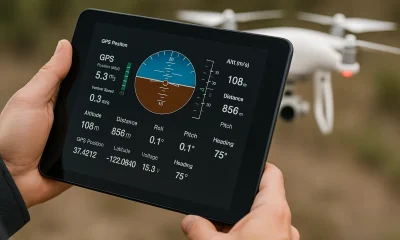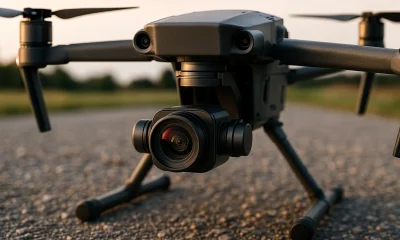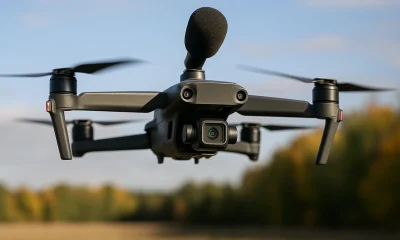Chinese Drone Regulations
Resources & Support for Chinese Drone Regulations
Published
12 months agoon
Table Of Contents

Resources and Support for Navigating Chinese Drone Regulations
Navigating the complex landscape of Chinese drone regulations can be challenging for operators and businesses alike. This section provides essential resources and support mechanisms designed to assist you in understanding and complying with these regulations, ensuring safe and lawful drone operations in China. From regulatory guidance provided by the Civil Aviation Administration of China (CAAC) to professional industry associations and specialized legal consultancy services, these resources offer comprehensive support to help you stay compliant and informed.
Training Programs
Civil Aviation Administration of China (CAAC) Training Resources
The CAAC offers various training resources to help drone operators understand the regulations and operate their drones safely and legally.
- Online Courses: The CAAC provides online training modules that cover the basics of drone operations, safety protocols, and regulatory requirements. These courses are available on the official CAAC website.
- Study Guides: Comprehensive study guides for the Basic and Advanced Operations exams can be downloaded from the CAAC website. These guides include information on airspace classifications, weather, emergency procedures, and more.
- Sample Exams: Practice exams are available to help operators prepare for the certification tests.
Accredited Training Providers
In addition to the CAAC, there are several accredited training providers that offer courses and certification programs for drone operators.
- Flight Schools: Many flight schools offer specialized drone training programs that cover both theoretical knowledge and practical flying skills.
- Online Platforms: Various online education platforms offer courses on drone piloting, safety, and advanced operations. These platforms often provide flexible learning options and interactive content.
Advanced Training Programs
For operators engaged in more complex or high-risk operations, advanced training programs are available.
- BVLOS Training: Courses that focus on Beyond Visual Line of Sight (BVLOS) operations, including the use of detect-and-avoid technology and advanced navigation techniques.
- Night Operations Training: Programs that cover the specific requirements and safety measures for flying drones at night.
- Urban and Industrial Operations: Training for operating drones in urban environments and industrial settings, emphasizing safety protocols and risk management.
Support Services
Civil Aviation Administration of China (CAAC) Support
The CAAC provides support services to assist drone operators with regulatory compliance and operational issues.
- Help Desk: Operators can contact the CAAC help desk for assistance with registration, certification, and regulatory questions. The help desk can be reached via phone or email.
- Online Resources: The CAAC website features a wealth of information, including FAQs, safety bulletins, advisory circulars, and regulatory updates.
- Regional Offices: The CAAC has regional offices across China that provide local support and resources for drone operators.
Local Authorities Support
Local authorities, including provincial and municipal governments, offer additional support services.
- Local Regulations: Information on local drone regulations and specific requirements.
- Permit Applications: Assistance with applying for local flight permits and permissions.
- Enforcement and Compliance: Support for understanding and complying with local enforcement measures.
Industry Associations
Several industry associations offer resources, advocacy, and support for drone operators.
- China UAV Industry Association: An industry association that represents the unmanned aerial vehicle community in China. They offer resources, networking opportunities, and advocacy for regulatory improvements.
- Aerial Robotics Industry Alliance of China: Provides training, certification, and support services for drone operators across various sectors.
- International Drone Industry Association: Focuses on promoting the growth and development of the drone industry through education, advocacy, and research.
Online Communities and Forums
Online communities and forums can be valuable resources for drone operators seeking advice, sharing experiences, and staying informed about industry trends.
- Zhihu: A Chinese platform similar to Quora, where users discuss drone-related topics and share knowledge.
- WeChat Groups: Numerous WeChat groups are dedicated to drone operations, providing a platform for operators to connect, share tips, and seek advice.
- Professional Networks: Platforms like LinkedIn host professional groups and networks for drone operators and industry professionals to discuss best practices and collaborate on projects.
Software and Tools
Various software and tools can assist drone operators in planning, conducting, and analyzing their operations.
- Flight Planning Software: Applications such as DJI Flight Planner, DroneDeploy, and AirMap provide tools for creating detailed flight plans, managing airspace compliance, and optimizing flight paths.
- Data Analysis Tools: Software like Pix4D and Agisoft Metashape help operators process and analyze aerial data, creating detailed maps, 3D models, and orthomosaics.
- Safety Management Systems: Tools like Kittyhawk and Aloft offer safety management features, including real-time airspace alerts, incident reporting, and compliance tracking.
Useful Links
CAAC Drone Safety
Local Authorities
- Visit your local government’s website for specific regulations and support services.
Industry Associations
- China UAV Industry Association
- Aerial Robotics Industry Alliance of China
Flight Planning Tools
Online Training Platforms
Summary
Accessing the right resources and support is crucial for ensuring safe, legal, and effective drone operations. The CAAC and local authorities provide essential training and support services, while industry associations and online communities offer additional resources and networking opportunities. Utilizing advanced training programs, software tools, and support services helps drone operators stay compliant with regulations, enhance their skills, and optimize their operations.
To Learn more about acronyms used in this article visit our Drones Acronym Page.
Pros
Cons
You may like


What is ALPA (Air Line Pilots Association) & How Does it Work?


What is AEHF (Advanced Extremely High Frequency)?


What is TLM (Telemetry) & How Does it Work?


What is PTZ (Pan-Tilt-Zoom) & How Does it Work?


What is PAS (Passive Acoustic Sensor) & How Does it Work?


What is OGI (Optical Gas Imaging) & How Does it Work?